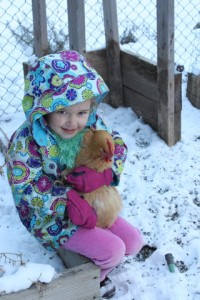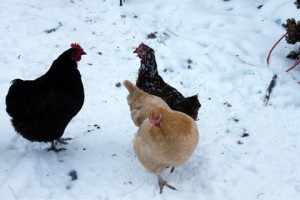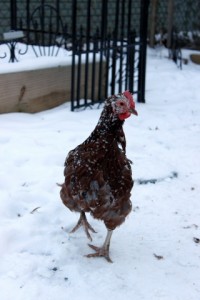 This is the face of our molting Australorp hen, Austra. Her pin-like feathers look prickly and uncomfortable. Austra is a generally affable character but molting makes her seem frenzied. I say comforting things to her and only joke about the awkwardness of her feather loss behind closed doors like every good chicken mom.
This is the face of our molting Australorp hen, Austra. Her pin-like feathers look prickly and uncomfortable. Austra is a generally affable character but molting makes her seem frenzied. I say comforting things to her and only joke about the awkwardness of her feather loss behind closed doors like every good chicken mom. Her roost in the morning appears as though a pillow exploded overnight. The nest box hasn't held an egg for over a week. I added excess bedding to be sure our chicken stays warm despite feather loss.
Her roost in the morning appears as though a pillow exploded overnight. The nest box hasn't held an egg for over a week. I added excess bedding to be sure our chicken stays warm despite feather loss.
 As Austra helps to put the garden beds to rest, one witnesses the full molt. Her downy feathers are showing beneath the missing top feathers. She is eating constantly to fuel growing new clothes. I am feeding her scraps from the kitchen as always and tossing bird seed into her run for extra fun and nutrition.
As Austra helps to put the garden beds to rest, one witnesses the full molt. Her downy feathers are showing beneath the missing top feathers. She is eating constantly to fuel growing new clothes. I am feeding her scraps from the kitchen as always and tossing bird seed into her run for extra fun and nutrition.
On the upside, when the molt is complete in a few weeks, her singed tail feathers will be replaced. Our Austra will be returned to her former iridescent black glory, not to molt again for another year.
Have you ever watched a hen molt? I still find everything about chicken rearing fascinating.
Added to Simple Lives Thursday.



